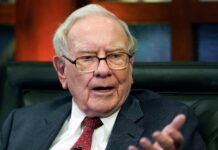credit should read Wiktor Szymanowicz/Future Publishing via Getty Images
- Rebekah Bowling helps advise ultra-high-net-worth clients on their art collections.
- She said visiting "incubator galleries" and a range of venues can help get over the initial hump.
- Transactions at the lower end of the art market boomed last year.
Walking into a gallery as an art world newbie is likely to be a somewhat humbling experience.
Rebekah Bowling, a senior art advisor at Citi who works with ultra-high-net-worth clients in Citi Wealth to manage and build their art collections, knows that it can be "really intimidating" to start buying art. Galleries typically don't list prices, and new buyers often don't know much about the artists or shows they're looking at, she said.
Even asking an employee at the desk about the works on display takes some courage.
"They, in turn, say, 'Let me get a director,' or, 'Are you a collector? Can you share a few details about your collection?'" Bowling said. "There's this vetting that happens at the front door. If you are not a known entity, there's the idea that you're not going to get treated as kindly."
Sales in the global art market fell 12% last year, totaling around $57.5 billion, according to Art Basel and UBS' Art Market Report. Despite the drop, the number of transactions increased by 3%, mainly because of sales in the lower tier of the market.
For those trying to get over the many humps and buy art for the first time, Bowling had a few pieces of advice.
Educate yourself
"Education is the first point," Bowling said. She suggests that anyone seriously interested in starting a collection spend at least six months, or even a year, educating themselves on the market and their own taste. It's essential to become familiar with both the primary and secondary markets, which respectively sell pieces for the first time and as resales, she said.
And though art can be a good investment — Morgan Stanley estimated 4.9% annualized returns on art and collectibles over a 20-year period in a report from earlier this year — Bowling doesn't think buying pieces only for potential profit is a smart strategy.
"If you're buying it for purely speculative reasons, hoping to hold it for a year or two and then flip it for a higher price, I think you will only be disappointed," she said. Bowling advises people to only buy pieces they genuinely love.
Visit a range of venues
Beyond galleries, Bowling said that auctions and art fairs can be "more welcoming" environments. Auctions often list price estimations and a few details about the artist, which can make the buying process less opaque. Art fairs offer new collectors an opportunity to explore a lot of work at once and "immediately see what they gravitate towards," Bowling said.
The Art Basel and UBS report found that the total value of sales at auctions fell by 20% to $23.4 billion in 2024. That said, the number of transactions grew 4%, spurred by growth at the low end, or pieces sold for less than $50,000.
Focus on emerging artists
Though some might only associate the art market with the Picassos and Matisses of the world, Bowling said emerging artists are a great place to start a collection, since their work tends to be less expensive. She advises visiting what she calls "incubator galleries," which might be located in neighborhoods like the Lower East Side of Manhattan, the East Side of London, or the East Side of LA.
"They're giving them their first, second, third, solo shows, focusing on showing this work to institutions, to curators, to tastemakers within the business," Bowling said. Typically, these galleries are good at keeping prices low initially.
Once a collector builds a relationship with a gallery, the gallerist will likely start keeping them up to date on new shows.
Read the original article on Business Insider


































